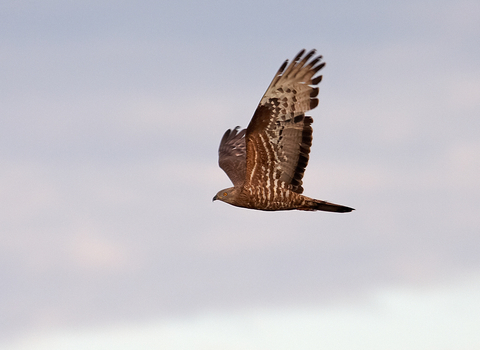
Honey buzzard ©Stefan Johansson
Honey buzzard
Rare summer visitors, honey buzzards breed in open woodland where they feed on the nests and larvae of bees and wasps.
Enw gwyddonol
Pernis apivorusPryd i'w gweld
May to SeptemberTop facts
Categori
Stats
Length: 56cmWingspan: 142cm
Weight: 730g
Classified in the UK as Amber under the Birds of Conservation Concern 5: the Red List for Birds (2021). Protected in the UK under the Wildlife and Countryside Act, 1981.
